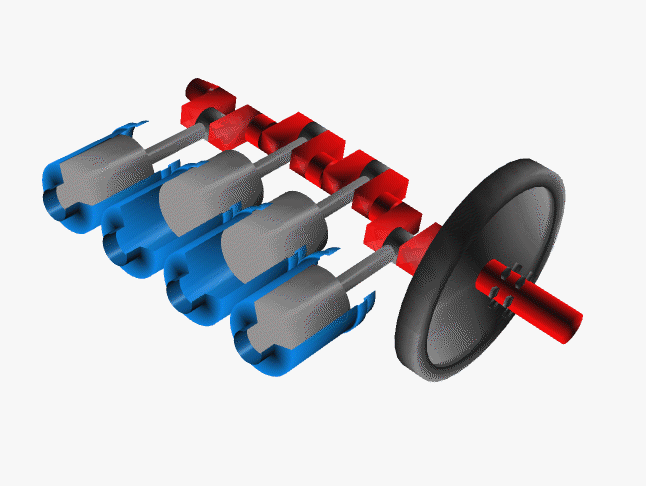A solenoid engine is a simplified version of a piston engine where steam or petrol is replaced by electricity and the pistons replaced with solenoids.
Solenoids are a simple electrical device composing of three parts. An electromagnetic coil, an armature and a frame.
The electromagnetic coil is simply a coil of wire. When a DC current is applied this coil creates a magnetic field. Inside this coil is the armature made from a soft iron. When power is applied it is attracted to the magnetic field. So when power is applied to the coil the armature is pulled into the centre of the coil. Converting electric energy to mechanical energy.
The Frame has two purposes. It completes the electromagnetic circuit and allows the armature to move in and out of the coil. The electromagnetic force produced, is dependent on the current inside the coils and the number of turns in the coils.

In a Solenoid Engine the armature is attached to an axle and a flywheel via a crank, or an excentric cam. Energising the coil pulls the cam as close as it can to the solenoid. This pulls the axle and flywheel around with it. At this point (known as top dead centre) the solenoid can’t pull the flywheel around any more. In fact the solenoid will now try to stop the flywheel moving any further. So to prevent this, the engine arranges to switch off the power so the flywheel can continue to turn.
With the power off, the flywheel turns the crank and will pull the armature out of the solenoid. When the armature is all the way out, the solenoid engine engages the power again. This pulls the armature back into the solenoid and the cycle continues.
Many solenoid engines have a rotating set of contacts that are attached to the axle to control the timing of powering the solenoid, or solenoids. Extreme Kits do this with optics and electronics, this allow us to control the motion and timing more accurately than with a mechanical solution.

Solenoid Engine
A range of acrylic solenoid engine models ranging from a single “cylinder” gas engine to an 8 cylinder V8 model. There are also Beam engine and Flat 4 engine variants.
All of our engines come as a kit of parts and a PCB to solder and are supplied with a battery holder, or are capable from running from an external supply. They all use ball bearing races for the axels.
These kits are ideal for a desktop piece or as a teaching training aid.
